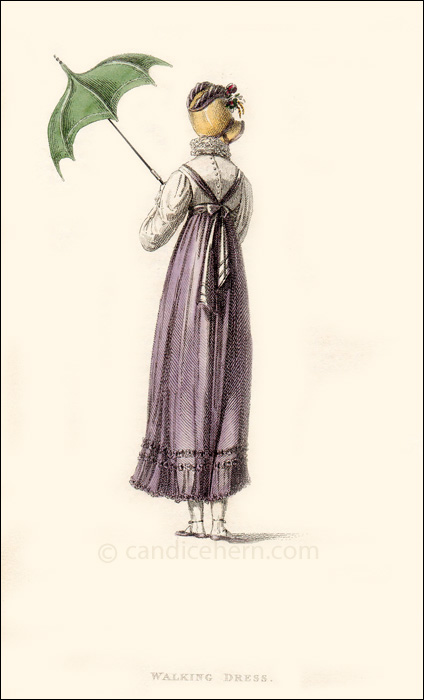Ackermann’s Repository of Arts, August 1814.
I always enjoy seeing a dress from the back, as it often gives us a better view of its construction. The term petticoat at this time typically referred to the skirt of a dress, and not an undergarment. So this dress is made of the purple petticoat/skirt attached to the white bodice (body), with the long purple sash worn over the shoulders as “braces” or suspenders. It would certainly be interested to also see the front of this dress.
Hems for walking dresses are worn shorter in this year, giving us a good view of the shoes (called sandals here, which simply means they were laced up over the ankle) and the stockings. The stockings shown here are said to be ribbed with laced clocks, ie lace embroidered at the ankles.
The print is described in the magazine as follows:
“A lilac sarsnet petticoat, full flounce round the bottom, confined by plaits or tufts of ribband of corresponding colour, and headed with a double border of the same; high plain body, made of white sarsnet, or jaconet muslin, buttoned behind; long full sleeve, confined at the wrist, and trimmed with a lace ruffle. Full lace ruff. Lilac scarf sash, worn in braces, and tied behind in bows and ends. A Russian bonnet, composed either of lilac and straw-coloured sarsnet, or of a fine split straw, ornamented on the crown with treble rows of ribband or large clusters of flowers. Ribbed stockings, with lace clocks. Sandals of lilac kid; gloves to correspond.”








